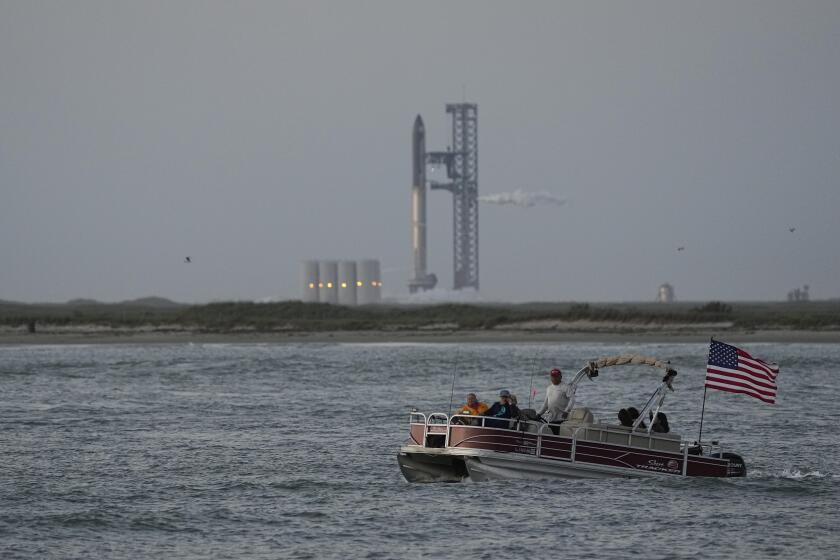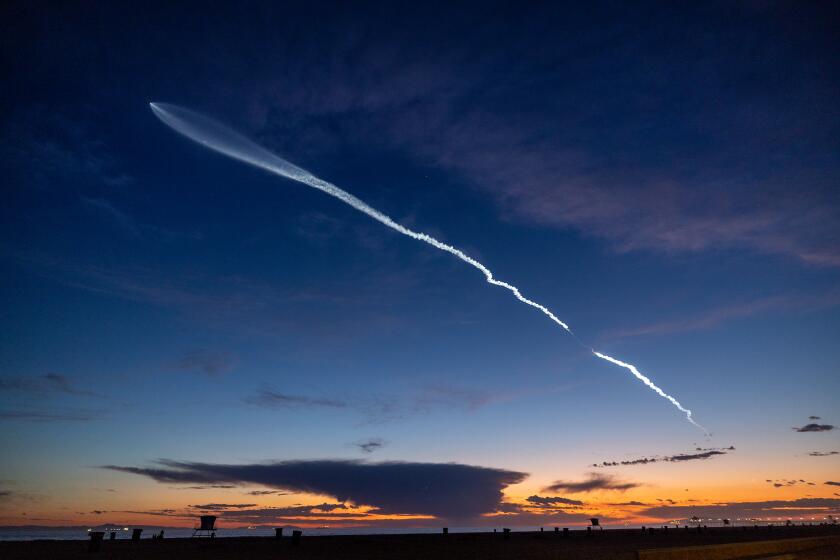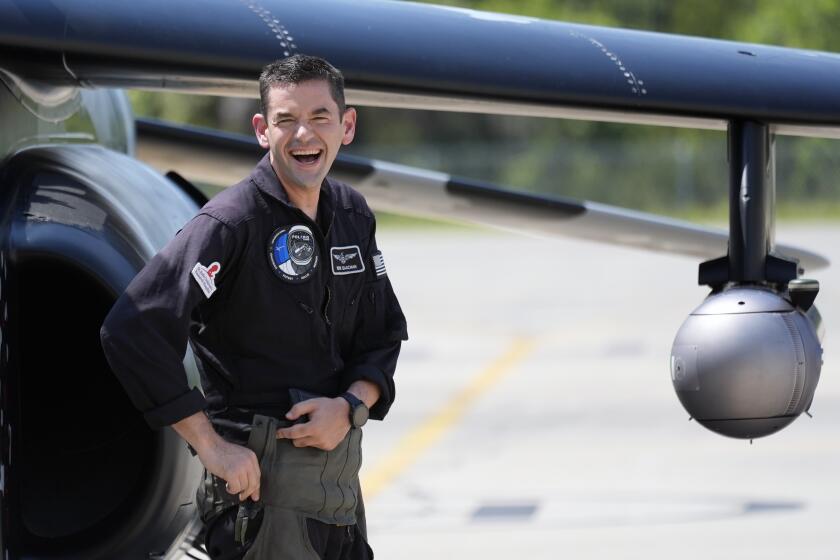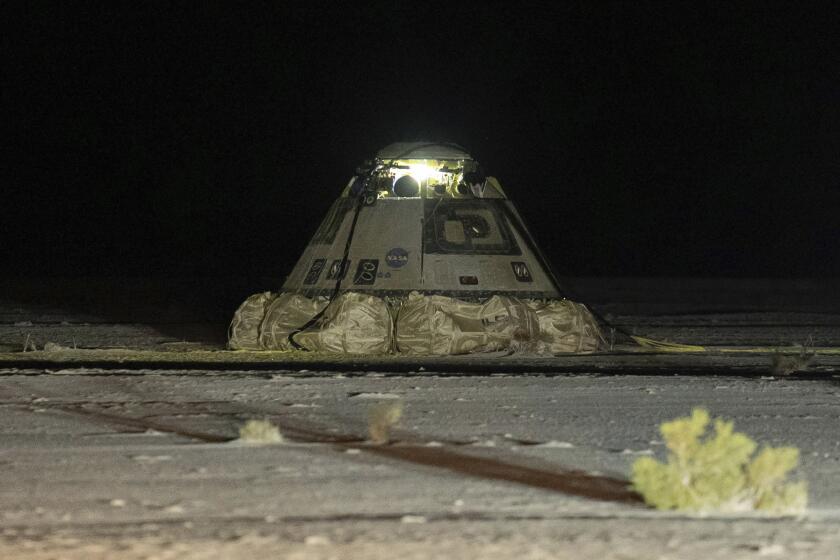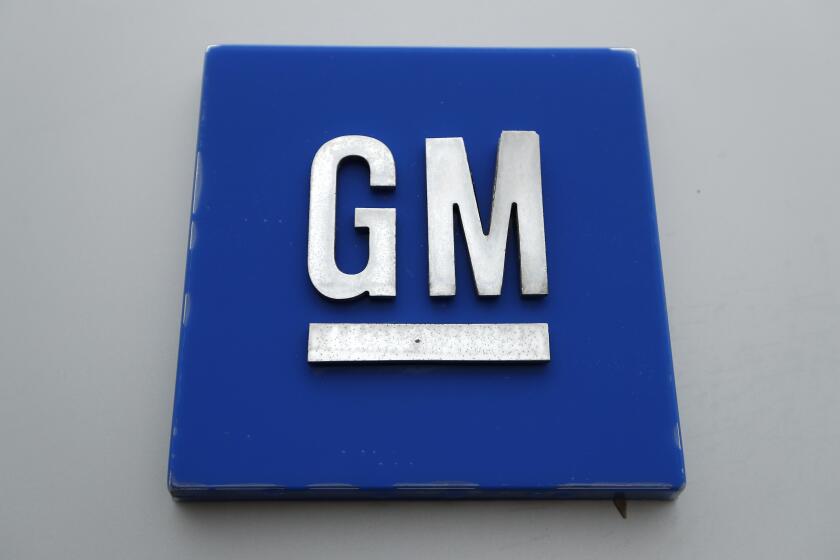Boeing faces critical launch Monday ferrying astronauts to the International Space Station

- Share via
Ferrying astronauts to the International Space Station has almost become routine — but not for Boeing and not on Monday, when after years of delay it’s finally set to launch two crew members to the orbiting platform on a critical test flight.
The Arlington, Va.-based aerospace giant was awarded a $4.2-billion contract in 2014 to build and operate a spacecraft to service the station, while Hawthorne rival Space X received $2.6 billion to do the same.
Both were given out under NASA’s Commercial Crew Program, established to have American companies taxi astronauts to the station.
SpaceX’s giant Starship rocket, intended to take humans back to the moon and eventually to Mars, blasts off successfully from a Texas launchpad.
The stakes are particularly high for Boeing. Since 2020, SpaceX completed its crewed test flight and has ferried eight operations crews to the base — while Boeing has managed only two unmanned flights, including one that docked remotely in May 2022.
Boeing has long-standing and historic ties to the aerospace industry in Southern California — the Apollo command and service modules were built at North American Aviation’s plant in Downey. Its current operations include a satellite facility in El Segundo.
Boeing’s new Starliner capsule was scheduled to launch with a crew last summer, but a problem was discovered with its parachute system and the use of flammable tape in the craft, a mile of which was removed. It was just the most recent of several delays.
Starliner, with crew members strapped in, is set to blast off at 7:34 p.m. Pacific time at Cape Canaveral Space Force Station in Florida. If the weather doesn’t cooperate or other minor issues arise, it could fly the next day or later in the week.
After the delays and a reported $1.5 billion in cost overruns the company had to absorb, analysts say it’s critical that the mission goes well. That’s especially true, given Boeing’s already battered reputation, after two crashes of its 737 Max 8 jets and a door plug that blew out of a 737 Max 9 flight this year on its way to Ontario International Airport in San Bernardino County.
“It’s very important for [Boeing’s] desire to be relevant to NASA, relevant to manned space flight and for confidence internally to turn around and execute a program that’s had problems,” said Ken Herbert, a Boeing analyst at RBC Capital Markets. “This could be a big win for Boeing, if they can successfully pull this off, just in light of all the bad news they get from every other part of the business.”
The capsule is designed to be reused 10 times, similar to SpaceX’s Dragon Capsule that services the station. It will be launched from an Atlas V rocket, a reliable workhorse built by the United Launch Alliance, a joint venture of Boeing and Lockheed Martin. Starliner should take about 26 hours to reach the station, which orbits at roughly 17,500 mph.
For the record:
10:16 a.m. May 8, 2024An earlier version of this story incorrectly said Space X is based in El Segundo. It is based in Hawthorne.
The flight plan calls for NASA astronauts Barry Wilmore and Sunita Williams to spend a minimum of eight days testing the docked Starliner capsule, before returning to Earth as soon as May 15. Unlike SpaceX’s capsule, which splashes down on water, Starliner will deploy giant air bags and touch down on land in one of four possible locations in the Southwest — a system the Russian space program has used since its inception. Edwards Air Force Base in Kern County is a contingency landing zone.
Assuming the flight is a success, Boeing would be cleared to fly Starliner on regular flights carrying cargo and astronauts, where it would stay docked for six months and provide NASA with a second, redundant American craft to reach the station, a longtime goal. The 15-feet-in-diameter capsule, shaped like a Hershey’s Kiss, can carry up to seven astronauts without cargo or fewer with it.
The U.S. Space Force said it wants to launch 36 rockets a year from Vandenberg Space Force Base. The Coastal Commission has concerns.
NASA Administrator Bill Nelson expressed confidence in the flight despite problems Boeing has experienced with its commercial aircraft.
“Understand that anytime you fly in space, it’s risky business, but we don’t fly, until we — NASA — are satisfied that it is as safe as possible,” he told The Times.
A Boeing spokesperson declined to respond to requests for comment.
Mark Nappi, the manager of Boeing’s Commercial Crew Program, said at a news conference Friday, “I have never felt readier on any mission that I have ever participated in. ... We are where we are supposed to be at this point.”
NASA contracted with SpaceX and Boeing after being forced to rely solely on the Russian space program to resupply and send crews to the station after the space shuttle program ended in 2011.
A longer-term issue for Boeing is that it has taken so long to certify Starliner that it might only service the station for its contracted six missions before the lab is sent back to Earth in 2031 in a controlled descent, where it will burn up in the atmosphere. Initially assembled in 1988, it is now the size of a football field and some pieces are expected to land in the far reaches of the ocean.
NASA wants to focus its resources on planned missions to the moon and deep space through its Artemis program, and the Russians aren’t interested either, said aerospace analyst Marco Caceres of Teal Group.
“The Russians have certainly expressed their desire not to continue their presence for no more than another 10 years,” he said.
While the station includes modules from multiple countries, NASA and the Russian program were its primary constructors, including a core power module the Russians sent up on the very first launch.
There have been nearly 4,000 scientific studies conducted on the station and now NASA is funding and supporting the development of commercial space stations where it can lease space to conduct science as needed. That includes Orbital Reef, a planned station by Jeff Bezos’ Blue Origin aerospace company.
NASA expects that Boeing and SpaceX will service those stations, and Boeing has said it has plans to launch Starliner to ferry astronauts to the station, which is still in its early development stages. Nappi said Friday that the company will “have time to make those decisions.”
Even if the Starliner flight goes flawlessly, NASA will continue to send astronauts to the space station on Russia’s Soyuz craft, given the country’s key role in building and continuing to operate the station.
Nelson said that aside from Russia’s operational role, it is important for the two space programs to maintain good relations despite tensions over the war in Ukraine, noting that each country has personnel embedded in the other’s mission control operations. He recalled how that relationship began when an Apollo capsule docked with a Russian Soyuz craft in a historic test project started amid the Cold War.
“This cooperation in space has been going in genuine success ever since Gen. Tom Stafford and Gen. Alexei Leonov came across that threshold docked in space in 1975,” he said. “There has been no evidence we have any problem. It is steady as you go.”
More to Read
Inside the business of entertainment
The Wide Shot brings you news, analysis and insights on everything from streaming wars to production — and what it all means for the future.
You may occasionally receive promotional content from the Los Angeles Times.
